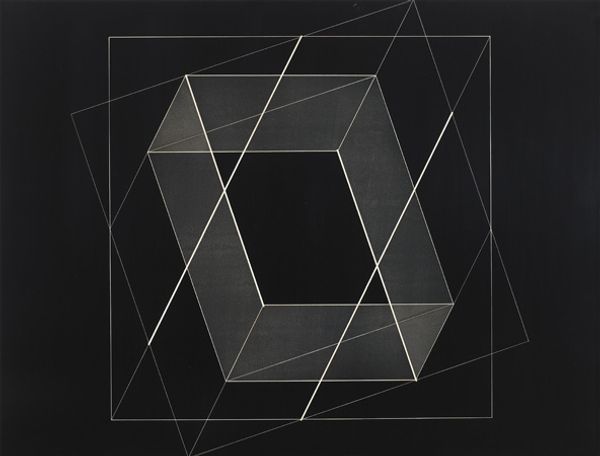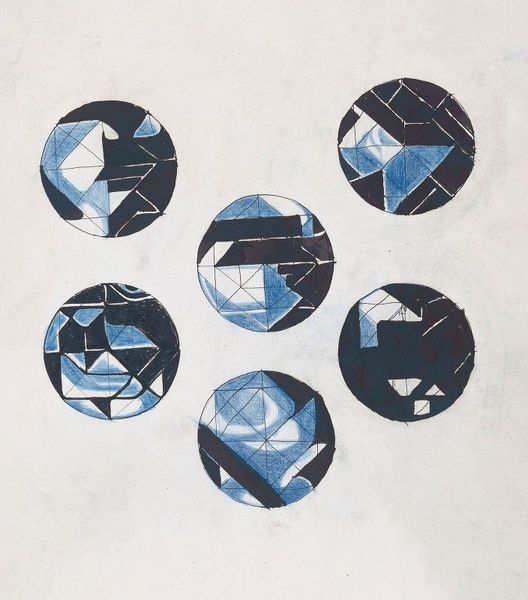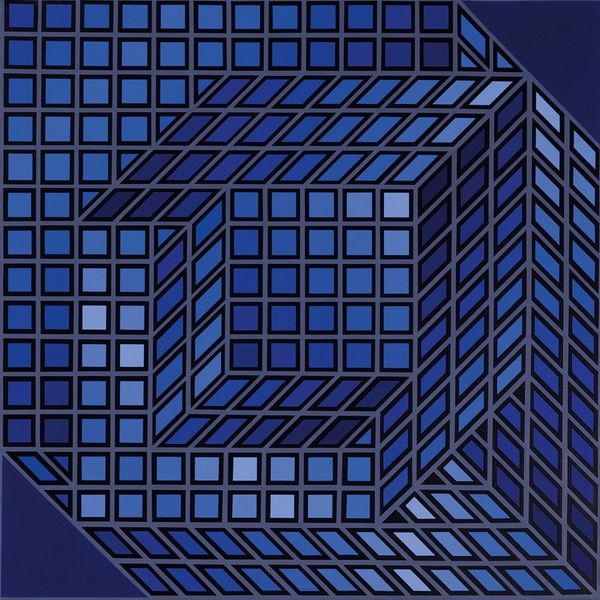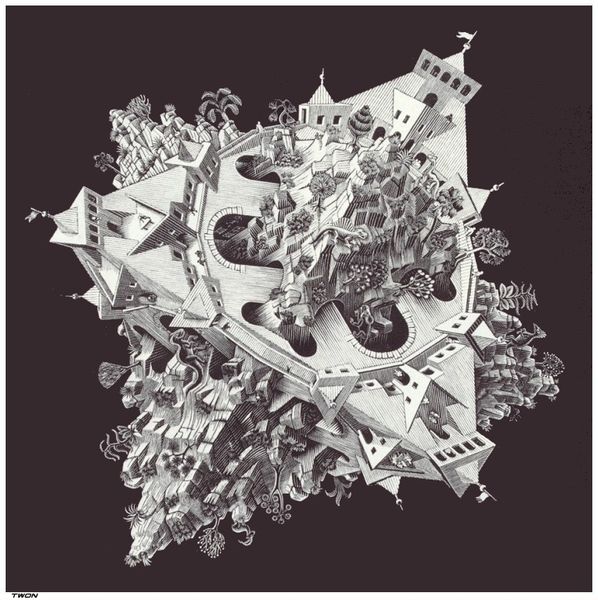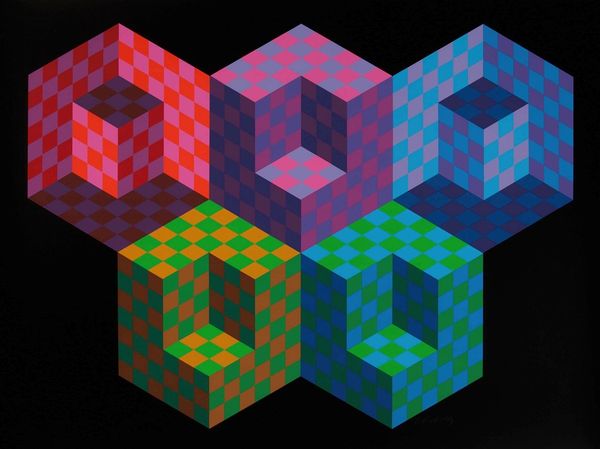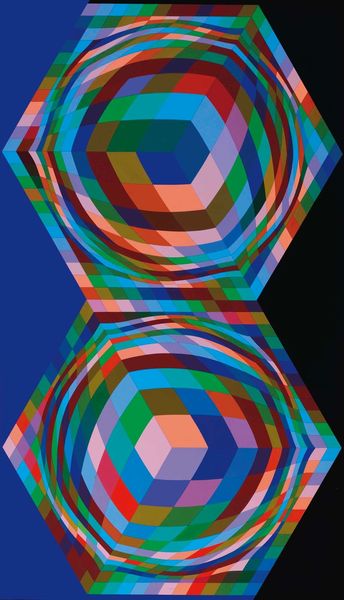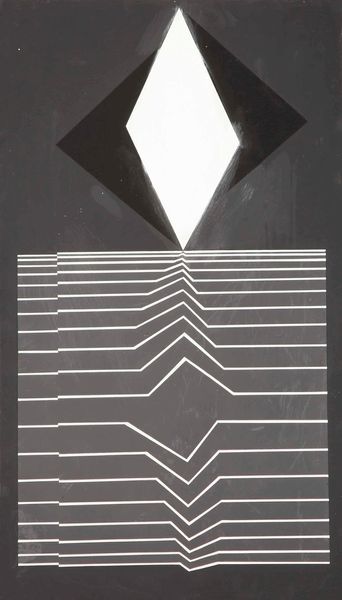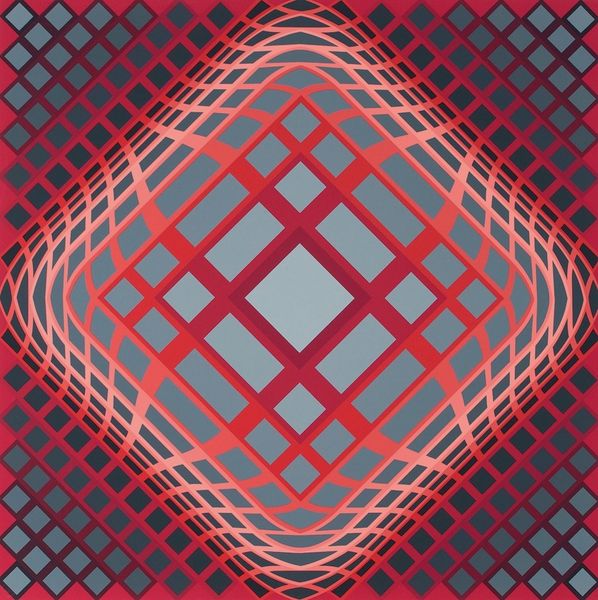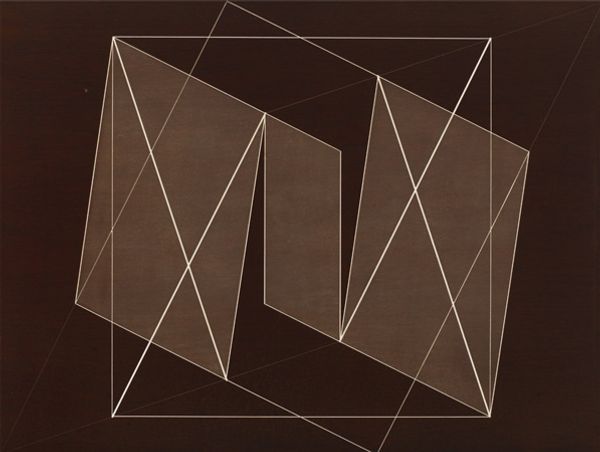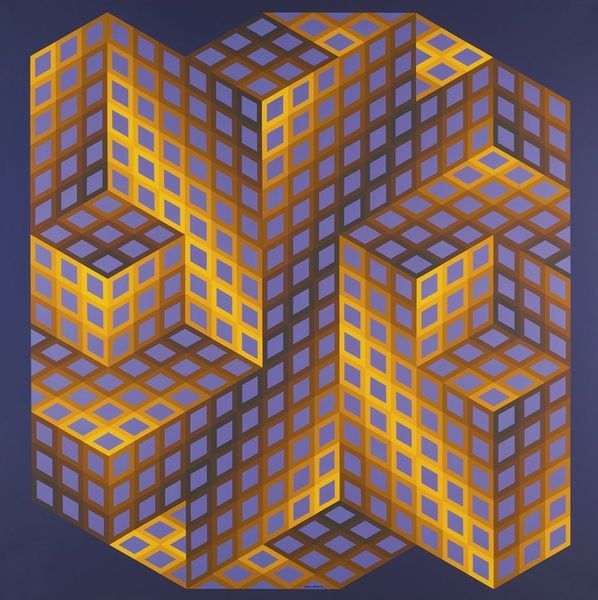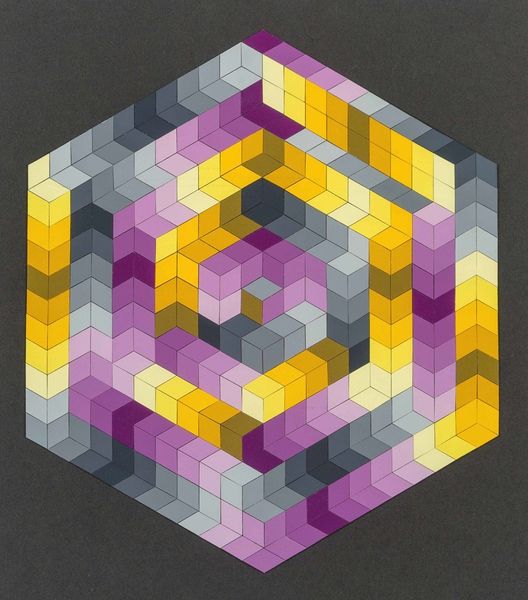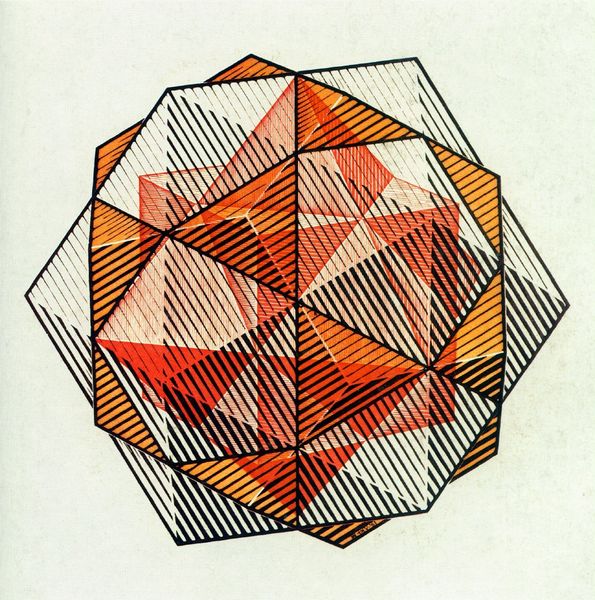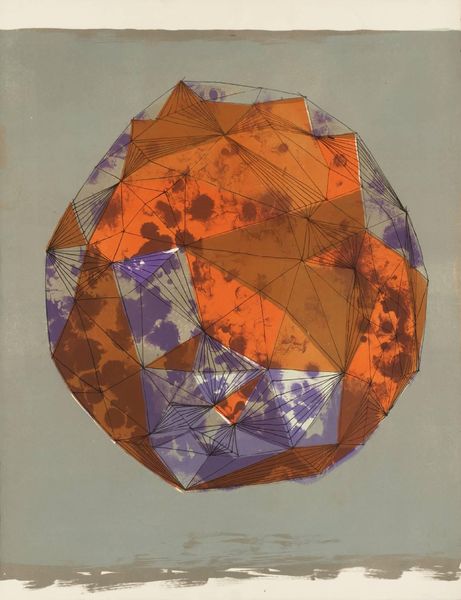
#
form
#
geometric
#
abstract symbol
#
abstraction
#
line
#
modernism
Copyright: Pablo Palazuelo,Fair Use
Curator: Immediately striking, isn't it? Almost architectural, yet softened by that textured ground. Editor: It feels contained, but simultaneously like it wants to burst forth. I see sharp angles fighting against that indigo wash. This piece is titled "Study for Monroy I," by Pablo Palazuelo, created in 1990. Curator: Palazuelo’s work frequently returns to these geometric, almost crystalline forms. It emerged in a moment where abstract art was re-evaluating its relationship with the political and social realms, pushing back against any strict detachment from society. The art world in the 90s was a reaction to decades of abstract movements—it all had something to say, and so did Palazuelo. Editor: That's what is remarkable about the piece: how these precise geometric forms still manage to convey emotion and thought. The materials themselves—presumably ink and possibly gouache on paper—suggest an immediacy, a handmade quality. I am curious as to his tools: what implements guided his markmaking, to find a language rooted in line. It is as though he aimed to render architecture from raw form. Curator: Well, what you point out gets to the heart of Palazuelo's process: a dedication to geometric abstraction, always attempting to communicate an almost spiritual order, which of course had deep political undercurrents at the time. Editor: Spiritual order is spot on—this feels like an architect's rendering for a celestial cathedral, but what's crucial to understanding it is how the material imperfections undermine that sense of perfection, creating a space for human interpretation. Palazuelo plays a critical dance, balancing industrial mark making with the human gesture of the hand. Curator: Yes, a dialectic of order and improvisation, and a really thoughtful engagement with the function and definition of "abstract symbol" in a world grappling with unprecedented social changes. It feels very of-the-moment while existing transcendentally. Editor: And that interplay continues to resonate today, inviting a reevaluation of our own engagement with material realities and their potential for meaning. It will remain, as his gesture did on the work surface, embedded into what comes next. Curator: Precisely—art history continually demonstrates that this work, which in Palazuelo's moment, felt both timely and unique, will only gain significance. I admire it more after this discussion.
Comments
No comments
Be the first to comment and join the conversation on the ultimate creative platform.
